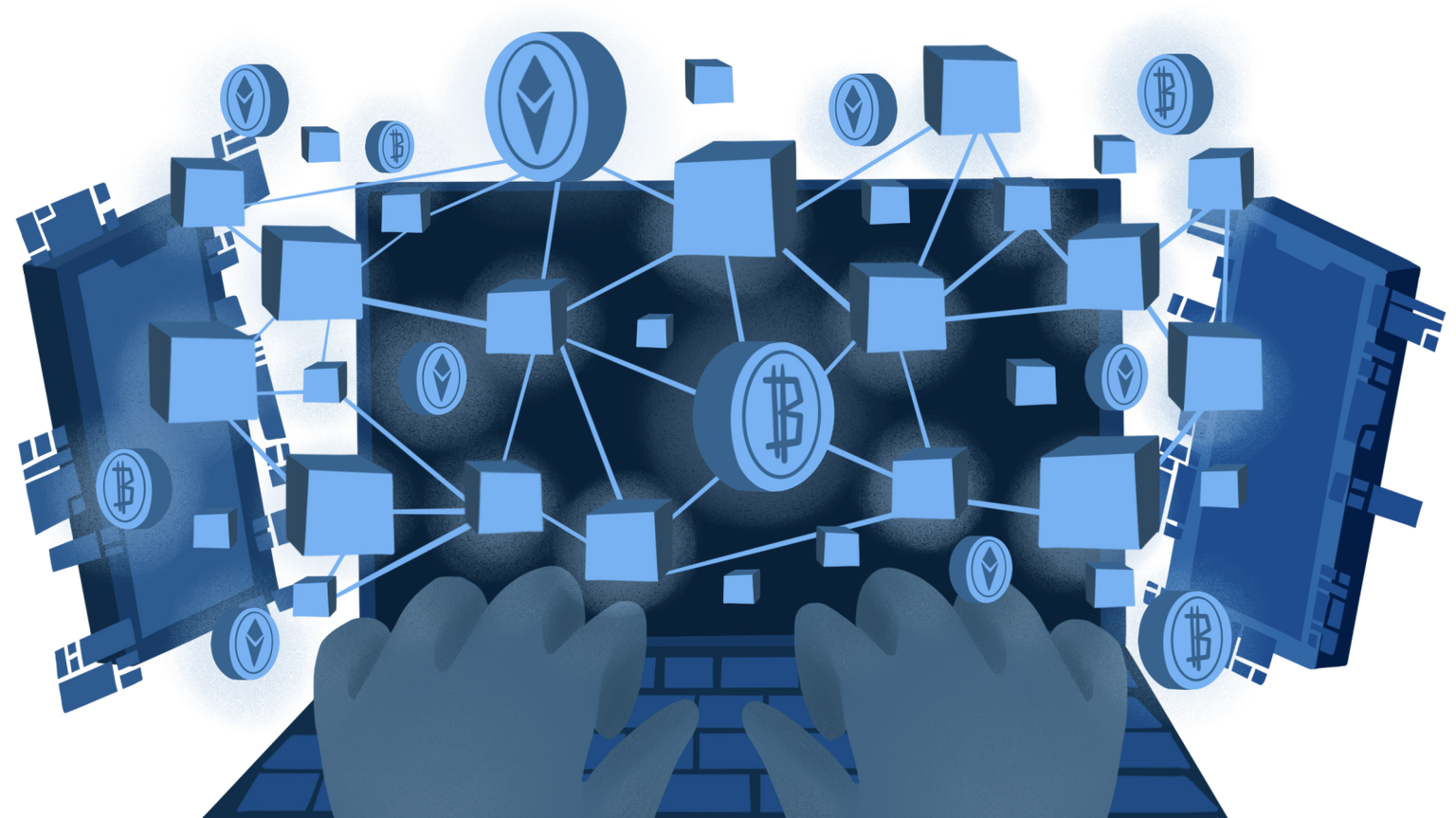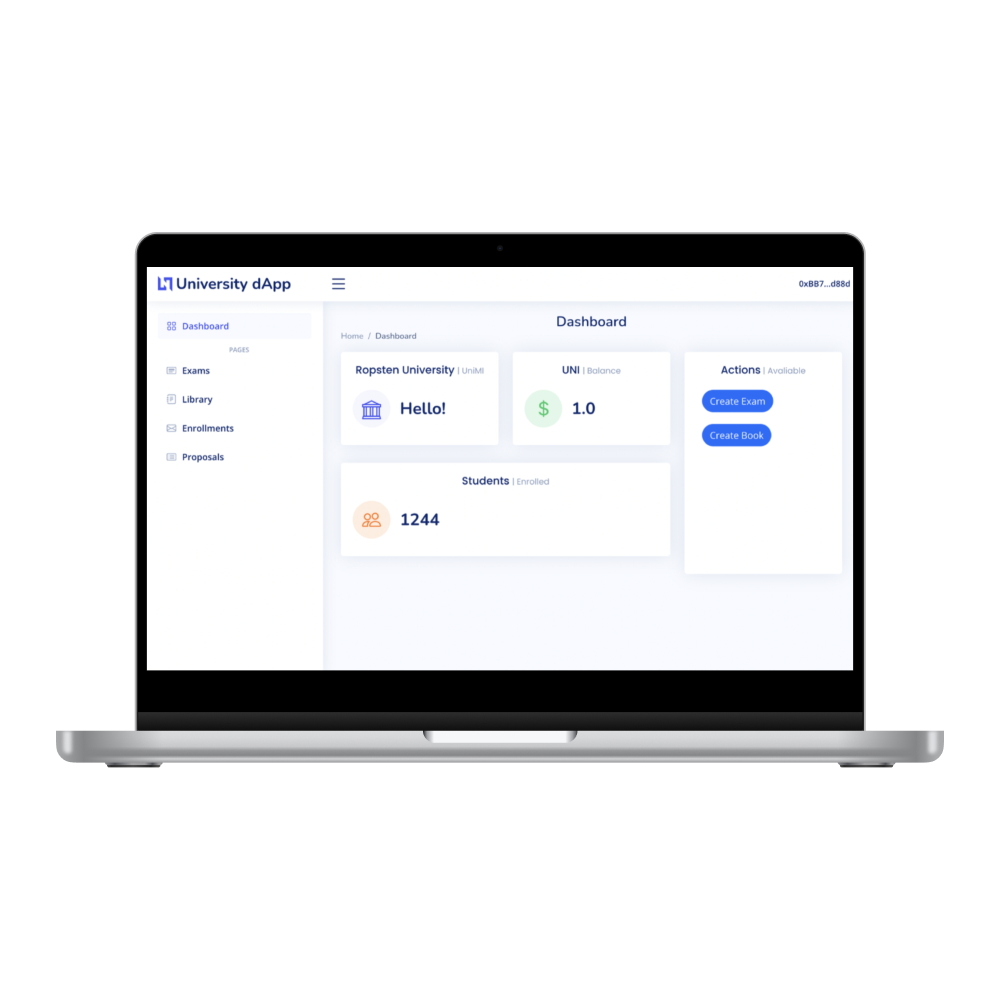Blockchain: a personal project
Academy
How far can Blockchain technology go in simplifying our lives? Full-Stack developer Manuel Savà sheds light on this question as he shares the narrative behind his thesis project, the "University Blockchain System."

Foreword to the readers: Speaking non-technically about technology, as you will understand, is complex. Not only that, but precision is sometimes necessary to avoid vague statements. However, I will do my best to narrate the story of my thesis work in a simplified manner so that even those who are new to the world of IT can understand it. Please bear with me if, due to professional inclination or necessity, I occasionally delve into technical details.
Currently, there are over 83 million active wallets worldwide, marking an impressive increase of over 70 million since 2016. This data highlights the remarkable exponential success that Blockchain and cryptocurrencies have enjoyed in the past decade.
Bitcoin and Ethereum (among the most well-known cryptocurrencies) have surpassed their all-time highs multiple times, reaching values of $69,044.77 and $4,878.26 per unit, respectively.
Blockchain technology itself has also gained considerable fame as a foundation for developing new applications. According to Findstack.com, there are currently over 4,000 active decentralized applications (dApps), with more than 96,000 active users each day. Well, it’s safe to say that the impact has been quite impressive, if you catch my drift.
What is Blockchain
I understand that grasping the workings and scope of such complex technologies can be challenging, especially if you’re not familiar with the topic. Let’s take a little step back and break it down into bite-sized nuggets of clarity.
Blockchain, in essence, is a shared and immutable data structure. Picture it as a digital ledger, where entries are meticulously organized into chronologically linked blocks. The integrity of this registry is ensured through the ingenious implementation of cryptographic techniques.
The remarkable aspect of blockchain is its dynamic nature—it grows and evolves over time, expanding like a living entity. Once information is securely written into this ledger using a standardized process, it becomes unalterable and irrevocable. Well, unless one is willing to compromise the entire chain of blocks, which is a different story altogether.
Blockchain for kids
It is often said that to explain things clearly to those who are unfamiliar with them, you should imagine explaining them to a child. So, in simplified and accessible terms, if I were to explain blockchain to a ten-year-old, I would probably narrate it like this:
Imagine being in a classroom full of students, and each child has a set of markers in their pencil case to trade. All the trades are written by the class leaders (what the experts call “miners“) on a big whiteboard that everyone can see. The miners, for their hard work, are rewarded by the student who gives up their markers with a portion of them in return.
On the whiteboard, however, only an indelible marker can be used, ensuring that the text cannot be erased or modified.
This way, we can always be certain of how many markers each child has. So, essentially, this is how blockchain operates.
Blockchain: practical uses
Despite the current hype surrounding Blockchain technology, its usage by the general public remains largely speculative. When my corporate mentor and I evaluated my thesis project, our new goal was to transform it into a solution for real-world problems instead.
I was reaching the end of my academic journey (at least the institutional one), and what I had gained in the previous three years, besides technical skills, was certainly the ability to navigate the jungle that is the university. So, where else to start but from firsthand experience?
By leveraging the Ethereum Blockchain, which was the first to introduce support for smart contracts (actual processes executed on the Blockchain), our aim was to revolutionize that ecosystem through a dApp. This dApp would offer students and universities the ability to streamline their routine operations, including exam enrollment, grade recording, book borrowing, and so much more.
University Blockchain System
For that segment of the audience who are more attuned to the topic, a small clarification is necessary. The application simulates a system based on permissioned Blockchain (a structure with closed networks, limited decentralization, an additional access control layer, and designated entities). However, for the sake of simplicity, it has been developed on a permissionless Blockchain: Ethereum, to be precise.
In order for the project to truly succeed, it had to be easily accessible and immediately usable. Consequently, the development of a smartphone-accessible portal was an essential aspect that had to be taken into consideration.
The University Blockchain System project, thus, came to life with the development of two web portals (one for universities and one for students) along with a dedicated mobile application for students.
Here’s a small example of how the interface looked like:

The architecture of the project significantly deviates from the standard Web 2.0 (the internet before Blockchain, to put it simply) where the database is considered the ultimate source of truth. In this case, the Blockchain takes center stage as the primary repository for data stored within smart contracts.
Unlike a static source, the Blockchain dynamically evolves and autonomously modifies itself. The database, on the other hand, assumes a considerably less significant role, merely storing data that facilitates interaction with the Blockchain.
University Blockchain System: accessing the System
Now that you have a general overview of the project, it’s time to delve deeper into how it works. Let’s start with the user’s journey: accessing the portal.
While usernames and passwords are currently the norm for logins, University Blockchain System completely abandons this method in favor of what I believe is a more secure approach.
The gateway to the site is a wallet. Don’t worry, let’s clarify right away: essentially, it’s a pair of keys – a public key and a private key – that distinguishes a user from all others and holds the address where all their data resides. Still a bit complicated? Let’s simplify it: Remember the story about the kids? The wallet is like the pencil case each child has, containing all their markers.
University Blockchain System’s Cryptos
When discussing Blockchain, it’s difficult to overlook the concept of cryptocurrencies. Therefore, it should come as no surprise that they played a pivotal role in the development of the University Blockchain System.
Returning to the metaphor mentioned earlier, cryptocurrencies would represent the objects of exchange, akin to the markers in our story. In this context, customized cryptocurrencies were created for both students and universities, each serving distinct purposes.
For universities, the focus was primarily on designing a governance cryptocurrency that enabled users to perform operations through smart contracts only if they possessed it.
For students, however, the process was a bit more intricate. The StudentToken cryptocurrency was built on a comprehensive tokenomics system, specifically tailored to not only grant access to services but also facilitate the exchange of coins.
NFT and library loans
The final element we will address here, and another essential asset for the functioning of the application, is the Non-Fungible Tokens (NFTs). In this case, we are not talking about virtual coins, but about non-fungible digital assets, unique or in multiple copies.
The uniqueness of NFTs lies in the fact that they can be associated with data such as images, PDFs, and audio files, making them a rapidly expanding – or rather, already well-established – product in the art market, music industry, and even a lucrative opportunity for the fashion industry. If you haven’t already, I recommend taking a brief journey into the depths of the web to discover the top-selling NFTs and their corresponding prices. It will give you at least a glimpse of the possibilities associated with tokens.
In the University Blockchain System project, NFTs served as substitutes for everything that typically has a tangible format in a student’s life, such as library books or the academic transcript.
Therefore, how does the process of borrowing digital books from a computerized ecosystem work? Quite intuitively: registered users can borrow digital books by utilizing their credentials and temporarily placing StudentTokens as a form of collateral, which are subsequently refunded upon return.
Some conclusions in retrospect
Now that you have a clear understanding of the main elements of the project, especially the application of Blockchain, we can make a quick assessment of the pros and cons that one needs to deal with when working on it (or at least, the ones I personally encountered and sometimes clashed with).
Pros:
- Transparency and non-repudiation of data (resulting in increased control)
- High resistance to compromise and, consequently, enhanced security
- Great accessibility
Cons:
- Volatility of coin prices and transaction costs.
- Waiting times for block validation and writing are still quite long, preventing real-time utilization.
What can we gather from this? That there is still a lot of work to be done to address the current weaknesses, but that Blockchain – with a little imagination and a great deal of expertise – can be a real (and truly good) answer to common problems. After all, doesn’t technology precisely serve the purpose to make our lives easier?